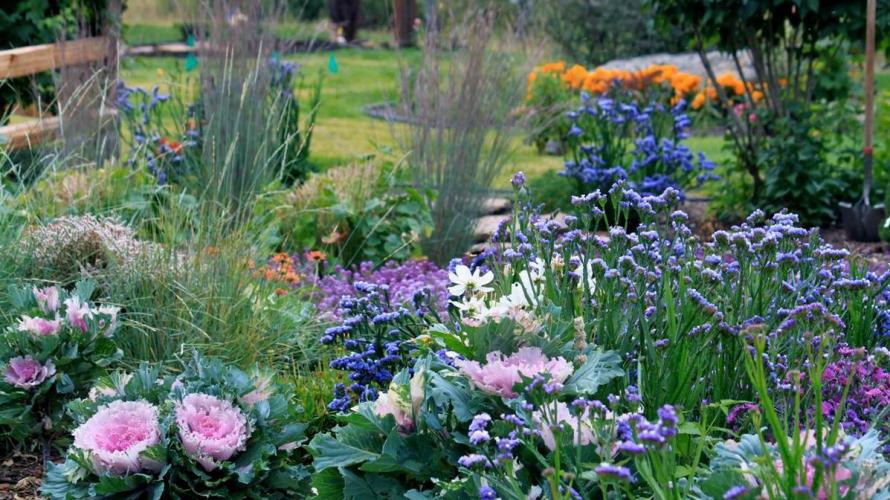

Jenna Caplette migrated from California to Montana in the early 1970s, first living on the Crow Indian reservation, then moving to Bozeman where she owned a downtown retail anchor for eighteen years. These days she owns Bozeman BodyTalk & Energetic Healthcare, hosts a monthly movie night, teaches and writes about many topics.
*********
I dug out my first 3 by 10 bit of grass to create a vegetable garden because I was dating someone who loved gardening. I thought it would be a way for us to connect.
I never asked if he wanted to connect through garden and as it turned out, he didn’t.
I dug it out because I was in a healthcare practitioner training that asked participants to pay attention to their own health. We were urged to eat organic local food. That was nine years ago.
Every year since there’s some new part of the lawn that begs to be dug up and planted with some flowering or edible something. Right now my daughter and I have almost finished digging out our newest area, with plenty of space for sprawling winter squash.
As I garden I take photographs: my vegetable starts under my new four-foot grow light; the tiered strawberry bed; the rock strawberry spiral. This year, I haven’t yet photographed the larger sprawl but will this weekend. I make notes on calendars of what I planted, when, and how it worked out.
I always think that during the winter I’ll make a journal of my garden’s progress but haven’t. I do, however, browse the photographs and remember lush, green times.
If you wanted to make a garden journal, here’s a few tips.
First, create a map of your garden, note what was planted where and when. Over the course of the season sit down to write your experience, including thoughts and suggestions for next year. To create an illustrated journal, weave your written notes with photographs. That journal becomes an essential resource in planning for next year and a potential source of fond memories for years to come.
You can find plenty of options for creating a completely personal gardening journal, including online journals and downloads for your word processing program, by typing “garden journals” in to a search engine like Google. You may be surprised to find that a program you already own includes one. For instance, Apple's Numbers offers a gardening journal in its template chooser. Each of the three pre-formatted pages includes sample entries to get you started and each allows you to insert your own digital images. The weather page helps track temperatures and rainfall, along with other weather observations. Another page is formatted for noting what you planted, when, where and how. Design and add your own pages as you want, customizing the types of information you want to capture.
Track your garden from your purchase of seeds through harvest and food storage both in writing and in images. Taking photographs can simplify your record keeping. These days, most cameras automatically store the metadata of your image, including the date and time you took the photograph. When you save digital files to your computer, be sure to properly identify what each image documents by naming files.
Here's some ideas for what to photograph: groupings of seed packets to remember what you purchased and planted; flowering and harvest dates; along with challenges your garden faced from disease and pests and weather. Capture creatures that thrive in your garden - including your cat curled up under the peonies -- I could create an entire photo collection of my cat under and with many plants over the years. My dog has favored places for digging, plants he uses to scratch his back (leaving a thank you offering of fur in appreciation).
Jot down practical reminders like when to fertilize and with what. Record dates for things like when you did the last deep watering of your deciduous trees before Fall settled in. Add recipes you discovered and used for fresh produce, or recipes you created. Note both what you liked and didn't like.
If you keep a garden journal online, you'll need to type in observations as you go. When you print a journal, you can handwrite entries and save computer entry for Winter or skip the computer all together. To preserve your completed journal so you can browse back through and share it, take it to a printer or full service photography store and have it bound or insert the pages into a photo album. Your journal and images become resources for another winter project: a Garden Retrospect Photobook -- the project I somehow seem to never get around to.
Sometimes during the summer I feel that one of the most intimate relationships I have is with my garden. And though every year, I tell myself I’m not going to put all that time and effort in to tending soil and plants, suddenly there I am, with a seed packet, and camera, in hand.
